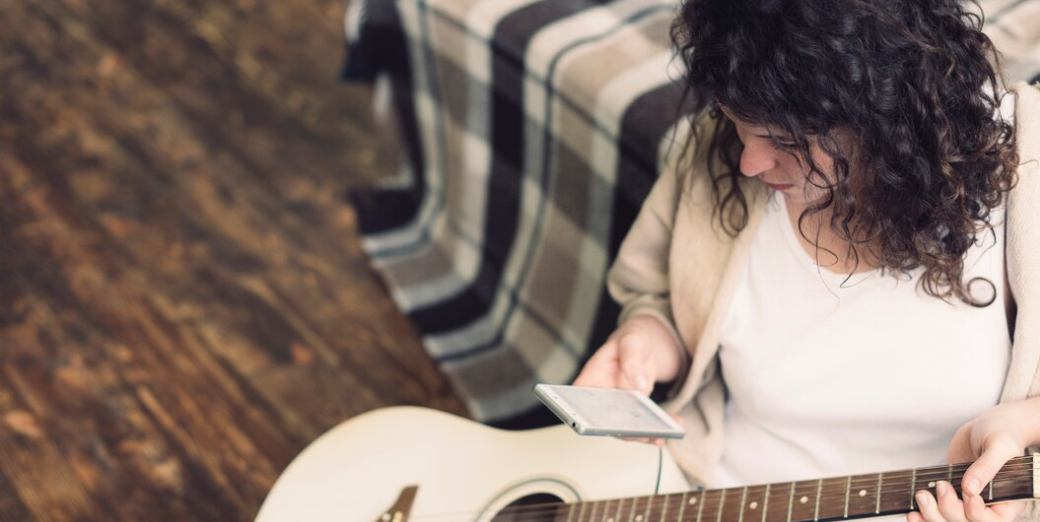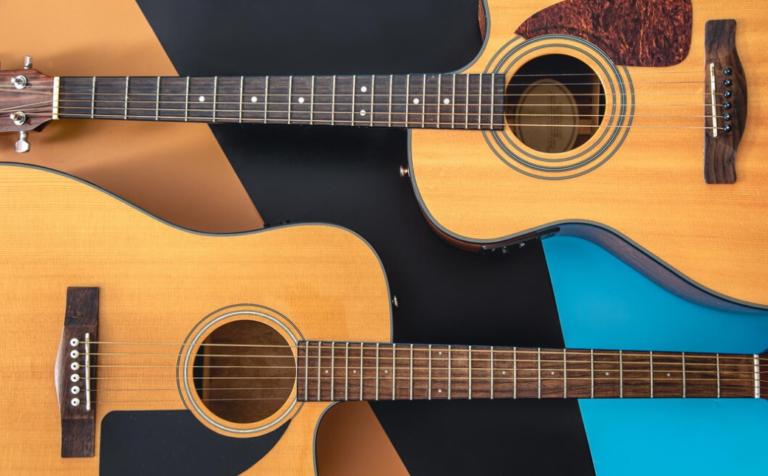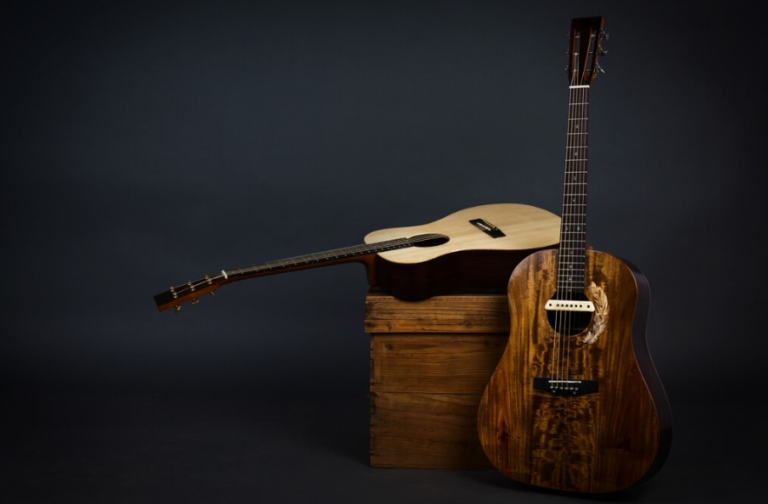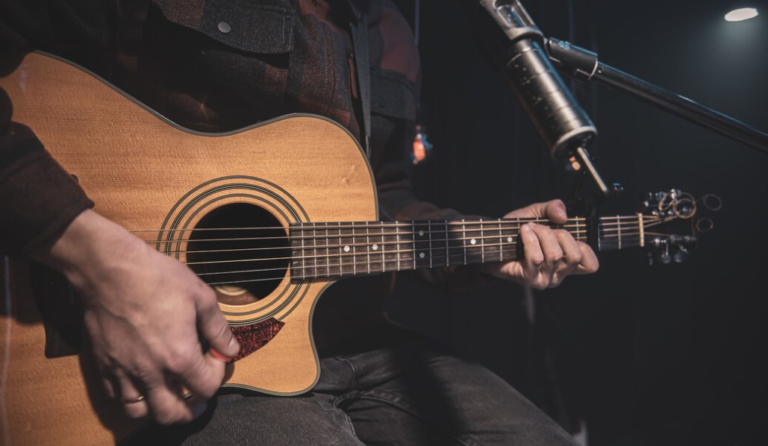C Major Pentatonic Scale: All You Need To Know

The C Major Pentatonic Scale is a musical treasure trove for guitarists, from beginners exploring their first melodies to seasoned players improvising fluid solos. This scale, with its sweet and melodious character, is widely used across various music genres including rock, blues, folk, and country. In this blog post, we’ll dive into the essentials of the C Major Pentatonic Scale, offering practical tips, fingering techniques, and ideas for incorporating this scale into your playing.
In this blog, we’ll talk about the C Major Pentatonic Scale, what notes create it, positions on the fretboard, and some practice tips so you can play it like pro.
What Is The C Major Pentatonic Scale?
Pentatonic scales consist of five notes per octave, unlike the more common heptatonic scales, which have seven. The C Major Pentatonic Scale derives from the notes of the C Major scale but omits the fourth and seventh degrees (F and B). This leaves us with the notes C, D, E, G, and A. The absence of half steps between the notes (which would come from F to E and B to C) gives the pentatonic scale its characteristic smooth, open sound that avoids dissonance.
Fingering The C Major Pentatonic Scale On Guitar
Learning to finger the C Major Pentatonic Scale on the guitar involves a few simple positions to start with. Here’s a basic way to play the scale across the neck:
Open Position
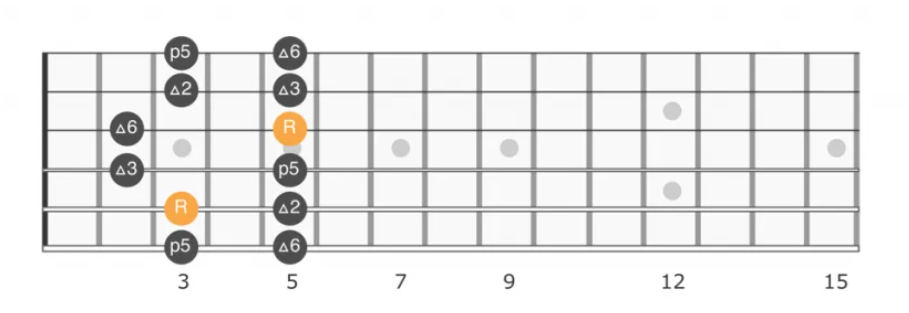
- Open Low E String (6th string): Pluck the open E string for the note E.
- 3rd Fret on the Low E String: Use your 2nd finger (middle finger) to play the note G.
- Open A String (5th string): Pluck the open A string for the note A.
- 2nd Fret on the A String: Use your 1st finger (index finger) to play the note B.
- 3rd Fret on the A String: Use your 2nd finger to play the note C, which is the root note of the scale.
- Open D String (4th string): Pluck the open D string for the note D.
- 2nd Fret on the D String: Use your 1st finger to play the note E.
- Open G String (3rd string): Pluck the open G string for the note G.
- 2nd Fret on the G String: Use your 1st finger to play the note A.
- Open B String (2nd string): Pluck the open B string for the note C (one octave higher than the starting root note).
- 3rd Fret on the B String: Use your 3rd finger (ring finger) to play the note D.
- Open High E String (1st string): Finally, pluck the open E string for the note E.
Closed Position

- 8th Fret on the Low E String (6th string): Start here with your 2nd finger (middle finger) to play the note C, which is the root note of the scale.
- 10th Fret on the Low E String: Use your 4th finger (pinky) to play the note D.
- 7th Fret on the A String (5th string): Switch to your 1st finger (index finger) to play the note E.
- 10th Fret on the A String: Use your 4th finger to play the note G.
- 7th Fret on the D String (4th string): With your 1st finger, play the note A.
- 10th Fret on the D String: Use your 4th finger to play the note C (one octave above the root note).
- 7th Fret on the G String (3rd string): Again with your 1st finger, play the note D.
- 9th Fret on the G String: Use your 3rd finger (ring finger) to play the note E.
- 8th Fret on the B String (2nd string): Switch to your 2nd finger to play the note G.
- 10th Fret on the B String: Play the note A with your 4th finger.
- 7th Fret on the High E String (1st string): Use your 1st finger to play the note C.
- 10th Fret on the High E String: Finally, use your 4th finger
These positions are just starting points. The pentatonic scale is incredibly versatile and can be played in multiple patterns across the entire fretboard.
Practicing The Scale
To get comfortable with the C Major Pentatonic Scale, start by practicing the scale up and down in various positions. Use a metronome to ensure timing accuracy and increase the speed as you become more confident. Here are a few practice tips:
- Sequences and Patterns: Practice the scale by playing in sequences of three or four notes to build finger independence and agility.
- Drones and Backing Tracks: Play the scale over a drone (a sustained note) or backing tracks in C major to hear how the notes interact harmonically.
- Improvise: Use the scale as a foundation for improvisation. Experiment with rhythmic variations and dynamic changes to make your playing more expressive.
The C Major Pentatonic Scale is not just a fundamental scale for guitarists; it’s a gateway to musical expression. Its ease of use and pleasing sound make it a favorite among musicians. Whether you’re just starting out or looking to expand your musical vocabulary, the C Major Pentatonic can add depth and beauty to your playing. Grab your guitar and explore the melodic possibilities that this wonderful scale has to offer!
If you’re interested in learning an instrument, at Real Brave, we offer an incredible experience like no other place in music lessons for kids and adults by guiding them from the beginning stages of getting to know an instrument all the way through performing for family and friends on stage. Our instructors come from all over the world, bringing extensive experience on a wide range of instruments. Click below and book a free lesson with us!
Author: Daniel Powers Jr, the founder of Real Brave™, serves as the chief inspiration to thousands of students in the Real Brave music instruction program. He’s also the visionary behind PracticePad™, an online platform for live one-on-one online music lessons, lesson tracking, and scheduling. Beyond his entrepreneurial pursuits, Daniel leads a non-profit organization that provides formerly homeless children with access to music education, making a profound impact on their lives. His unwavering dedication to music, innovation, and education continues to inspire individuals to reach their fullest potential while creating positive change in communities. Follow Real Brave on all the socials:
youtube.com/@realbraveinc
twitter.com/realbraveinc
https://www.tiktok.com/@realbraveinc
instagram.com/realbraveaudio
facebook.com/realbraveinc
